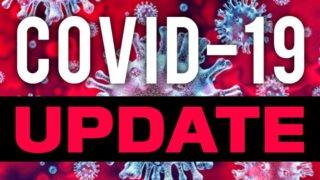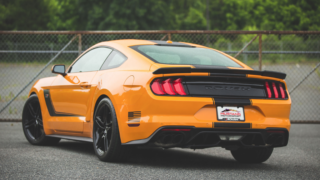Nitrous Oxide FAQ
Q: How does nitrous work?
A: Nitrous oxide is made up of 2 parts nitrogen and one part oxygen (36% oxygen by weight). During the combustion process in an engine, at about 300 degrees, nitrous breaks down and releases oxygen. This extra oxygen creates additional power by allowing more fuel to be burned. Nitrogen acts to buffer, or dampen the increased cylinder pressures helping to control the combustion process. Nitrous also has a tremendous “intercooling” effect by reducing intake charge temperatures by 15 to 25 degrees.
Q: What is better, a “wet” or “dry” kit?
A: It all depends on the application. A “wet” kit is ideal for both normally aspirated applications as well as forced induction applications. It can require a little bit more installation time than a “dry” kit, but is easier to tune if greater than stock HP settings are to be experimented with. A “dry” kit is excellent for normally aspirated combinations that have a return style fuel system. They are very easy to install and are a great “first time” nitrous system. It is not recommended that “dry” systems be used on forced induction engines.
Q: How long does a bottle last?
A: It depends on bottle capacity and the size of the nitrous shot being used. On the 75hp setting, a 10 lb. bottle will last around 10 quarter mile runs. On the 125hp setting the bottle will last around 6 runs.
Q: Do I need a bottle warmer?
A: A nitrous bottle heater makes it easy to automatically maintain the optimum bottle pressure of 900-1000 psi. This ensures maximum hp and consistency for your nitrous system. Most companies have a very easy to install bottle heater that is thermostatically controlled and totally automatic.
Q: Will nitrous affect engine reliability?
A: As long as the nitrous system is installed per the instructions and the set-up procedures are followed, there is usually not any increase in engine wear.
Q: What does it mean to have a 55, 75, or 125 “shot” of nitrous?
A: “Shot” is a slang term for the horsepower setting your nitrous kit is set to.
Q: What type of fuel is recommended when I use my nitrous system
A: For 4-6 cylinder engines, premium pump gas is required for safe use of your nitrous system when jetted up to 75hp. Above 75hp, racing fuel is recommended for maximum engine safety. For 8 cylinder engines, premium pump gas is adequate for nitrous system settings up to 125hp. Above 125hp, racing fuel is recommended.
Q: Do I need to change my fuel pump when adding a nitrous system?
A: If you have basic bolt-ons (performance filter, headers, exhaust, etc.), your stock fuel system should be adequate to support the stock settings your nitrous kit comes with. If major modifications have been done to your engine (heads, cam, turbo, supercharger, etc.) you must upgrade your fuel system.
Q: What is the optimum bottle pressure to run my nitrous system?
A: The optimum nitrous bottle pressure is 900-1000 psi. Most companies offers a bottle pressure gauge that makes it easy to monitor this.
Q: Do I have to change my spark plugs after installing the nitrous system?
A: YES, Due to the increase in horsepower the nitrous system creates, the quantity of heat generated in the combustion chamber goes up. It is required that you install spark plugs that have at least two steps colder heat range. This helps to ensure detonation free performance when using the nitrous system. NGK has nitrous specific spark plugs available for many makes and models of vehicles.
Q: Is it OK to use a nitrous system on a high mileage engine?
A: It is OK only if the engine is in good mechanical condition. The primary concern is to ensure that the engine does not consume excessive oil. Oil in the combustion chamber can cause detonation.
Q: Can I have a performance “chip” in my ECU while using my nitrous system?
A: Generally the answer is NO. Most performance “chips” on the market advance ignition timing to gain additional horsepower. This additional timing, when using nitrous, can cause engine damaging detonation. The only exception to this are “chips” that have been specifically programmed for nitrous use.
Q: What is the safest way to activate a nitrous system?
A: The safest way to activate a nitrous system is by using a wide-open throttle switch. Most nitrous systems utilize this type of activation. Activating a nitrous system at anything less than wide-open throttle can greatly increase your chances for an intake system backfire. If you desire to use a push button for activation, most companies offers this as an accessory item. You can simply install the push button inline with the wide-open throttle switch.
Q: What is the minimum RPM I need before activating my nitrous system?
A: We recommend at least 2500rpm as a minimum for nitrous system activation. This ensures that you will not have excessive cylinder pressures that could cause engine damage. The use of an RPM window switch ensures no premature activation. Nobody likes premature activation especially engines.
Q: Do I need a purge kit?
A: A nitrous purge kit clears the delivery lines of unwanted air and vapor and guarantees immediate power from your nitrous system. It´s also used to intimidate your competition and shows the world your nitrous equipped.
Q: Is there a way to turn my nitrous bottle on and off without having to open the boot?
A: Yes, most companies offers a Remote Bottle Valve Opener that allows you to open and close your nitrous bottle from the convenience of your drivers seat.
Q: How do I know how full my bottle is?
A: The only accurate way to measure how full a nitrous bottle is, is to weigh the bottle. Nitrous systems achieve maximum power when the nitrous bottle is at least 20%, or greater, full. Below 20%, surging and lack of power occurs.
Q: How long does it take to install a ZEX nitrous system?
A: Single nozzle EFI systems typically take just 6 hours to install. Our plate and direct port systems generally take 8-16 hours.
Q: How long can I spray the nitrous system for?
A: You could spray your nitrous system until the bottle is empty, but the practical limit is usually around 15-20 seconds of continuous use.
Q: Is nitrous oxide flammable?
A: No, nitrous oxide is not flammable. It is simply an oxidizer that supports the combustion of additional fuel.
Q: What is the difference between a “wet” nitrous kit and a “dry” nitrous kit?
A: A wet nitrous kit mixes nitrous and enrichment fuel by means of an injector nozzle that is mounted before the throttle body. This mixture is then drawn into the engine through the throttle body and intake manifold. A “dry” nitrous kit injects only nitrous with it´s injector while at the same time, increasing the engine´s fuel rail pressure to feed enrichment fuel through the engine´s own injectors.
Q: How does nitrous work?
A: Nitrous oxide is a gas that contains two parts nitrogen and one part oxygen. When the combustion process heats this gas, the oxygen is released. This extra oxygen then supports the combustion of the enrichment fuel the nitrous system adds when it is engaged. The additional fuel that is burned, creates greater cylinder pressure, which makes the extra horsepower you feel.
Q: How much will a nitrous system improve my performance?
A: 1-2 second improvements in quarter mile times are typical. Traction limitations greatly affect the improvement seen.
Q: What are the advantages of using nitrous compared to other performance options? A: The cost of many other performance options can put you in the poorhouse.
Dollar for dollar, you can’t buy more performance with less money than nitrous. With a nitrous system, performance and reliability can be had for a much more reasonable price while still retaining the advantage of a stock engine during normal driving. And, Nitrous offers tremendous gains in torque without having to rev the engine to excessive rpm’s.
Q: Can you run nitrous with a manual transmission? A: Yes. Just make sure that you have the correct safety equipment before you do so. This Includes:
WOT (Wide Open Throttle) Switch RPM Window Switch FPSS (Fuel Pressure Safety Switch)













